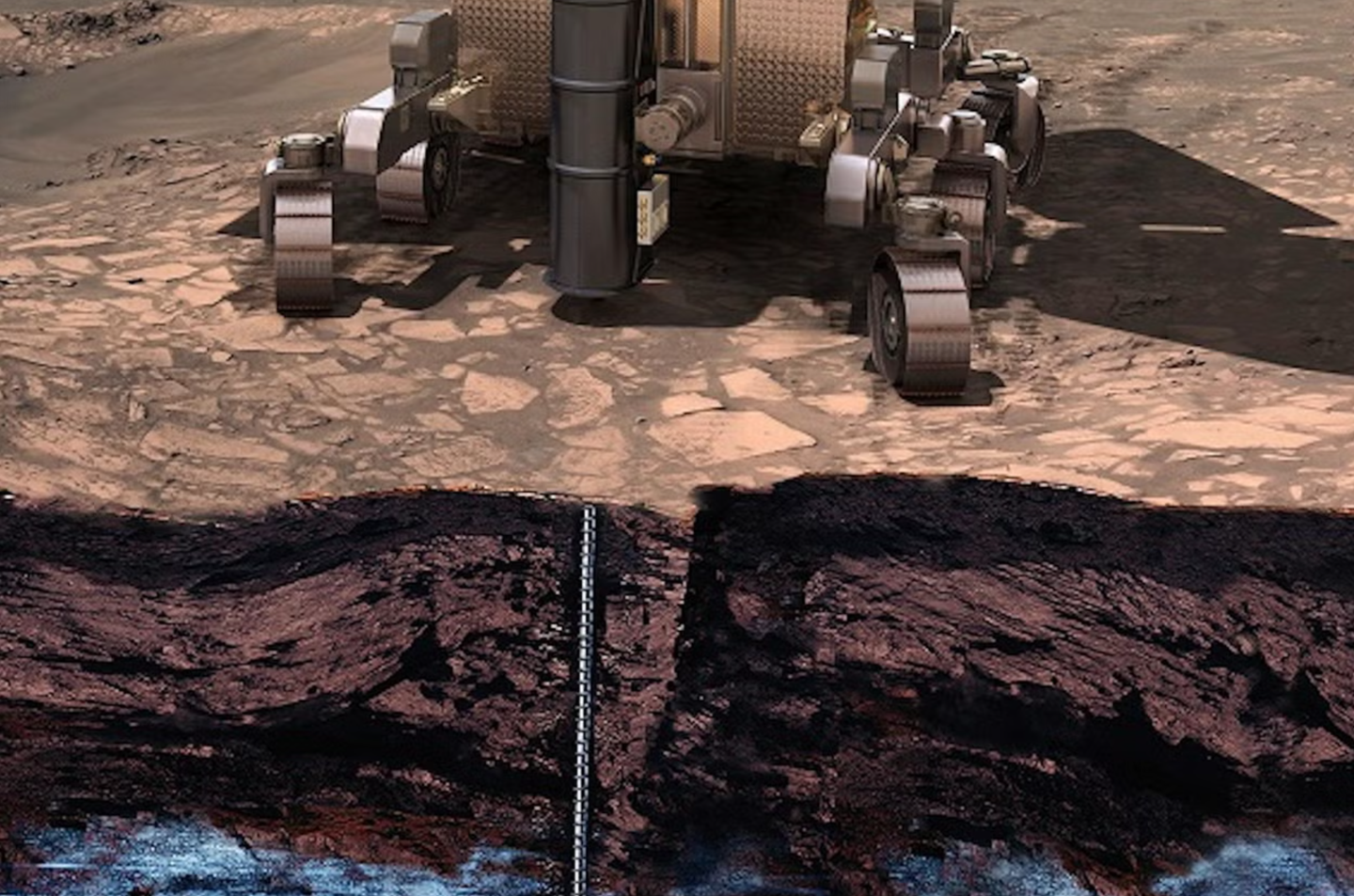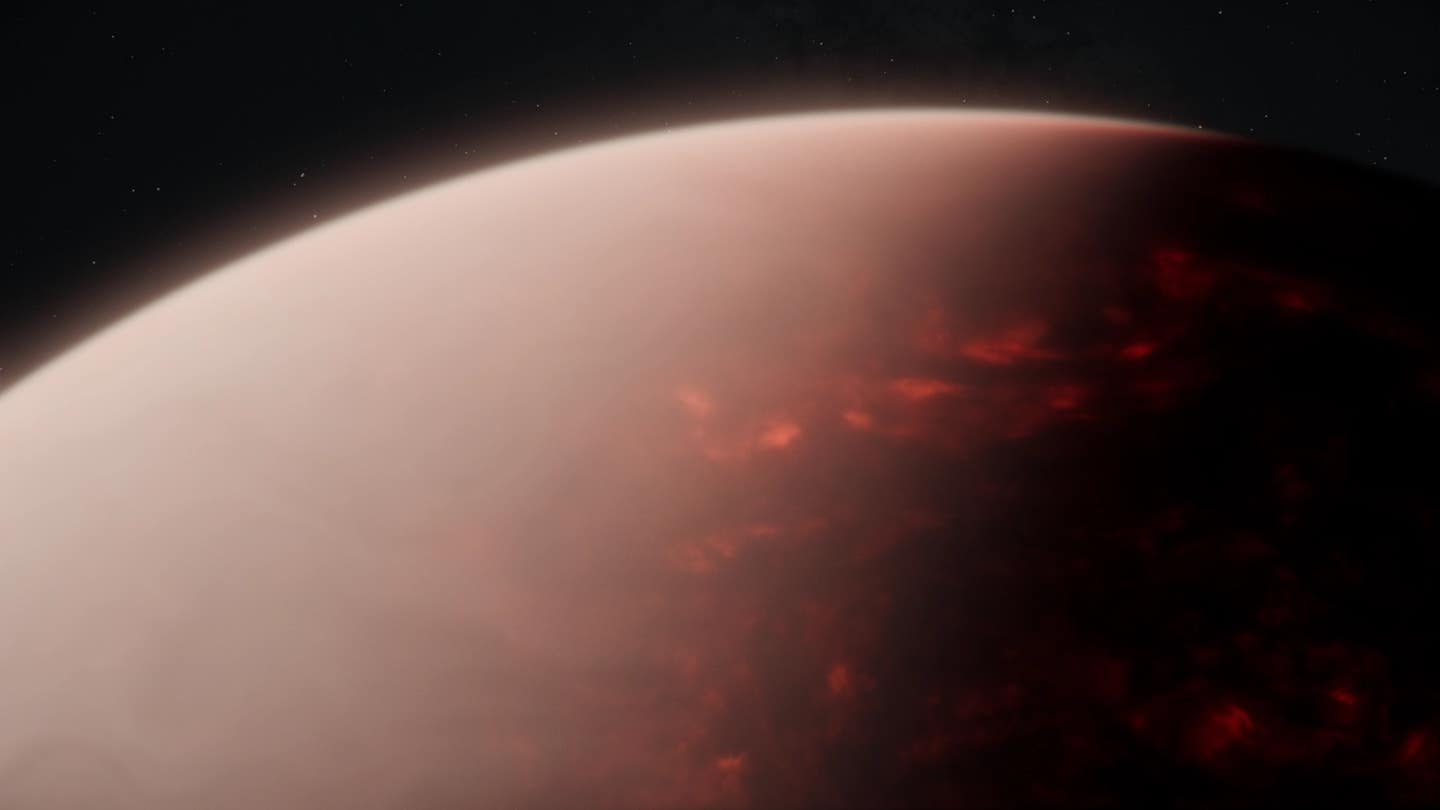New study finds life could survive under the surface of Mars and other planets
Cosmic rays may help support underground life on Mars and icy moons, challenging traditional ideas of habitable zones.

The Rosalind Franklin rover, designed to drill below the Martian surface to search for signs of life hidden underground. (CREDIT: NYU Abu Dhabi)
Life doesn’t always need sunlight. In fact, in some of the coldest, darkest places in the solar system, the spark for life might come from something far more extreme: cosmic rays.
A new study led by Dimitra Atri at NYU Abu Dhabi, published in the International Journal of Astrobiology, flips the script on what makes a planet or moon livable. Instead of focusing only on places warmed by a nearby star, Atri and her team propose something bold: that high-energy radiation from deep space—specifically galactic cosmic rays (GCRs)—might actually support life in underground environments on planets like Mars and moons such as Europa and Enceladus.
The Power of Radiation to Support Life
It’s widely known that ionizing radiation—like X-rays, gamma rays, and cosmic rays—can damage cells, DNA, and proteins. Exposure can lead to cancer, heart issues, or birth defects. Space agencies even consider GCRs one of the biggest threats to future astronauts traveling to Mars. But there’s another side to this powerful force.
In certain environments, radiation doesn’t just destroy—it creates. When energetic charged particles hit ice or rock, they can break apart water molecules in a process called radiolysis. This reaction releases electrons and other useful products. On Earth, some bacteria use those electrons as an energy source, much like how plants use sunlight for photosynthesis.
Radiolysis has been observed to produce hydrogen gas and oxidants deep underground, where sunlight can’t reach. In fact, in deep South African gold mines, researchers have found microbial ecosystems powered entirely by chemical reactions from radioactive decay. A bacterium called Candidatus Desulforudis audaxviator lives this way, thriving kilometers below the surface without any sunlight at all.
Introducing the Radiolytic Habitable Zone
Using GEANT4, a powerful physics simulation tool, Atri’s team calculated how much energy cosmic rays could deposit beneath the surfaces of Mars, Europa, and Enceladus. They estimated how many electrons would be produced, and how much of that energy could support life.
Related Stories
- Why Mars became a desert while Earth stayed alive
- Scientists may have found the right location to begin living on Mars
- First direct evidence of how Mars lost its thick atmosphere and water
The result? A new framework called the Radiolytic Habitable Zone, or RHZ. This concept shifts the focus away from the traditional “Goldilocks Zone”—a region around a star where temperatures are just right for liquid water. Instead, the RHZ looks underground, at places where water ice and cosmic radiation combine to create energy-rich environments.
The RHZ depends on how much radiation gets through a planet’s thin atmosphere or icy shell. It also depends on how deep the cosmic rays can reach, and how much energy is released in the process. On Mars, for example, cosmic rays can reach several meters below the surface. On Europa and Enceladus, their icy shells offer less protection than Earth’s atmosphere, allowing even deeper penetration.
Enceladus, Mars, and Europa: A Ranking of Possibilities
The simulations showed that Saturn’s moon Enceladus had the greatest potential to support life through radiolysis. Mars followed closely behind, and Jupiter’s moon Europa came next. These icy bodies, long thought to be lifeless because of their cold, sunless surfaces, could actually harbor underground ecosystems fueled by radiation.
Microbial life wouldn’t need much to survive. Atri’s team used estimates of ATP (adenosine triphosphate) requirements—essentially a cell’s energy budget—to calculate how much biomass radiolysis could support. They even estimated bacterial cell densities by looking at how much energy is produced as a function of depth.
Enceladus stood out not just for the amount of energy produced, but for how that energy is distributed. Its interior could allow a dense population of microbes, supported by radiation-powered chemical reactions. Mars, with its thin atmosphere, also allows GCRs to reach underground ice and rock layers. Europa’s thicker ice shell absorbs more energy before it reaches the subsurface, placing it slightly lower in the rankings.
Radiation Isn’t Always the Villain
Radiation often gets a bad rap. But many lifeforms on Earth are far more resistant to it than previously thought. Some bacteria have developed proteins like catalases, peroxidases, and oxidases to protect themselves from the harmful effects of radiation-produced reactive oxygen species. Others boost melanin production, which acts as a natural shield.
And then there are those that go further—not just resisting radiation, but using it. Some underground bacteria survive off of hydrogen and other compounds generated by radioactive elements like uranium and potassium. These microbes show that life can adapt to, and even thrive in, high-radiation environments if the conditions are right.
The key is water. Liquid water, even in small pockets underground, allows for chemical reactions to happen more easily. It provides a medium for complex molecules to form, react, and organize. That’s why researchers believe oceans beneath the ice of Europa or Enceladus could be excellent places to look for alien life.
In those oceans, cosmic rays hitting the surface ice could trigger chemical cascades, creating hydrogen gas, oxidants, and electrons. These could diffuse into liquid regions and power microbial metabolism—without any need for sunlight.
Expanding the Search for Life
This study broadens the definition of habitability. Life might not need warmth from a nearby sun. It might not even need geothermal heat from the planet’s core. Instead, cosmic rays—long feared for their harmful effects—could serve as a life-giving energy source in the right conditions.
By defining the RHZ and mapping out where radiolysis could provide enough energy for life, Atri’s team offers a new strategy for astrobiologists. Missions to Mars or icy moons might shift focus from the surface to the subsurface. Robotic explorers could carry instruments designed to detect the products of radiolysis: hydrogen, sulfates, or even complex organic molecules.
As Atri put it, “Instead of looking only for warm planets with sunlight, we can now consider places that are cold and dark, as long as they have some water beneath the surface and are exposed to cosmic rays.”
This new model doesn’t just suggest that life could survive in extreme conditions. It also offers hope that the universe may be teeming with it, quietly thriving in hidden oceans, powered by the stars themselves.
Note: The article above provided above by The Brighter Side of News.
Like these kind of feel good stories? Get The Brighter Side of News' newsletter.



